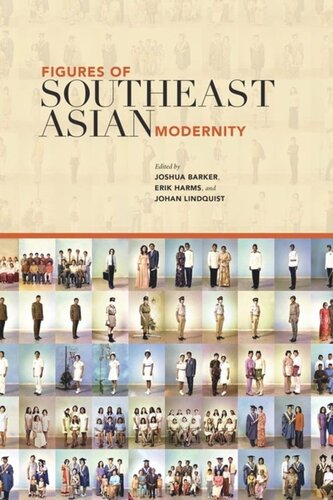

Most ebook files are in PDF format, so you can easily read them using various software such as Foxit Reader or directly on the Google Chrome browser.
Some ebook files are released by publishers in other formats such as .awz, .mobi, .epub, .fb2, etc. You may need to install specific software to read these formats on mobile/PC, such as Calibre.
Please read the tutorial at this link: https://ebookbell.com/faq
We offer FREE conversion to the popular formats you request; however, this may take some time. Therefore, right after payment, please email us, and we will try to provide the service as quickly as possible.
For some exceptional file formats or broken links (if any), please refrain from opening any disputes. Instead, email us first, and we will try to assist within a maximum of 6 hours.
EbookBell Team

4.0
26 reviewsWe live in a world populated not just by individuals but by figures, those larger-than-life people who in some way express and challenge our conventional understandings of social types. This innovative and collaborative work takes up the wide range of figures that populate the social and cultural imaginaries of contemporary Southeast Asia—some familiar only in specific places, others recognizable across the region and even globally. It puts forward a series of ethnographic portraits of figures that represent and give voice to something larger than themselves, offering a view into social life that is at once highly particular and general. They include the Muslim Television Preacher in Indonesia, Miss Beer Lao, the Rural DJ in Thailand, the Korean Soap Opera Junkie in Burma, the Filipino Seaman, and the Photo Retoucher in Vietnam.
Figures of Southeast Asian Modernity brings together the fieldwork of over eighty scholars and covers the nine major countries of the region: Burma (Myanmar), Cambodia, Indonesia, Laos, Malaysia, the Philippines, Singapore, Thailand, and Vietnam. An introduction outlines important social transformations in Southeast Asia and key theoretical and methodological innovations that result from ethnographic attention to the study of key figures. Each section begins with an introduction by a country editor followed by short essays offering vivid and intimate portraits set against the background of contemporary Southeast Asia. The result is a volume that combines scholarly rigor with a meaningful, up-to-date portrayal of a region of the world undergoing rapid change. A reference bibliography offers suggestions for further reading.
Figures of Southeast Asia Modernity is an ideal teaching tool for introductory classes to Southeast Asia studies, anthropology, and geography.